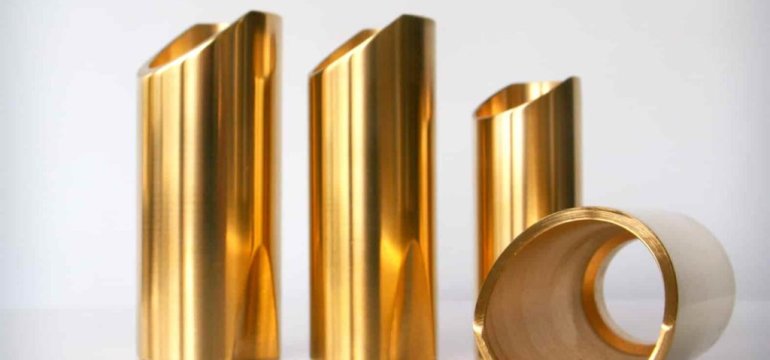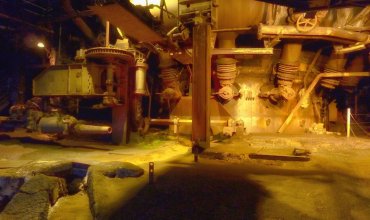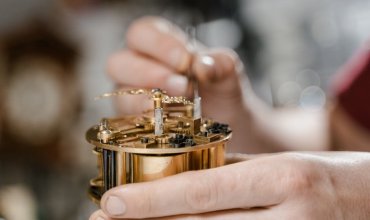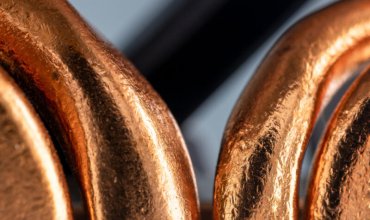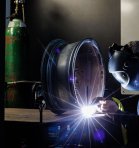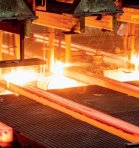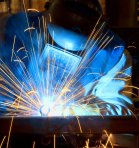Whether you are a do-it-yourselfer, a student or someone interested in mineralogy, being able to distinguish copper from brass can be of great benefit. Both copper and brass are commonly used in a variety of industries, have a wide range of applications, and can often be confused due to their similar appearance. In this article, you will learn step-by-step how to distinguish copper from brass using various methods and tools. We will analyze the physical and chemical characteristics, as well as practical tips that will help you easily identify these two metals.
What is copper and brass: basic information
Copper: main properties and applications
Copper is one of the oldest metals known to mankind, having been used for thousands of years. It is a chemical element with the symbol Cu and atomic number 29. Due to its excellent electrical and thermal conductivity, copper is used primarily in the electronics and electrical industries. In addition, it is an indispensable ingredient in alloys, such as bronze, and a material in the manufacture of cookware and plumbing.
Copper is characterized by its distinctive reddish-brown color, which can develop a greenish-blue patina over time. The metal is soft, malleable and easy to work with, making it an ideal material for many applications. Additionally, copper is biologically active and plays an important role in the functioning of living organisms, making it often studied in the context of medicine and biology.
Brass: composition and applications
Brass is an alloy of copper and zinc, the properties of which change depending on the percentage of both elements. Brass is valued for its strength, good corrosion resistance, and attractive golden yellow color. The alloy has found wide use in the construction and jewelry industries, as well as in the manufacture of musical instruments, valves and fittings.
Unlike pure copper, brass is harder and more durable, making it an ideal material for components that require extra strength. Thanks to the variety of brass varieties, it is sometimes difficult to distinguish it from copper, especially for those unfamiliar with metallurgy. However, the use of a few simple methods makes it possible to quickly and efficiently identify both metals.
Distinguishing metals: physical characteristics
Color and surface appearance
One of the easiest ways to distinguish copper from brass is to analyze the color and surface appearance. Copper has a distinctive warm reddish-brown color, which can become covered with a green patina over time. In contrast, brass, which is an alloy of copper and zinc, has a golden yellow color. On closer inspection, brass may appear shinier and brighter compared to the matte shade of copper.
However, it is worth remembering that both metals may be covered with various coatings or patinas that alter their natural color. In this case, to be sure of the type of metal, you should first clean the surface, for example, using fine-grained sandpaper. Still, color by itself is not always a 100% reliable indicator, so it is worth using additional methods.
Weight and hardness
Another physical characteristic that will help you distinguish copper from brass is their weight and hardness. Copper is denser (over 8.9 g/cm³) than brass, which has a density in the range of 8.4-8.7 g/cm³, depending on the ratio of copper to zinc. In practice, this means that for comparable volumes, copper will always be heavier than brass.
The hardness of these metals also differs noticeably. Copper is a relatively soft metal, which makes it easy to work with, and it can be bent and formed without much trouble. Brass, due to its zinc content, is noticeably harder and more resistant to bending. This can be checked by trying to scratch the surface of both metals with a sharp tool - copper will scratch more easily than brass.
Chemical methods: chemical reaction tests
Reactions with acids
If the external appearance and physical properties are not enough to accurately determine the type of metal, chemical methods can be used. One effective way is to use acids to carry out chemical reactions. Copper and brass react differently with different acids, making it possible to distinguish between them.
Copper in contact with hydrochloric acid (HCl) does not react intensively, only a slight erosion of the metal is possible. Unlike copper, brass, due to the presence of zinc in its composition, reacts with hydrochloric acid to form zinc chloride, which leads to visible foaming of the surface.
Ammonia tests
Another chemical method is the ammonia (NH₃) test. When ammonia is applied to the copper surface, you will not observe any significant changes. However, in the case of brass, the ammonia reacts to give a specific blue-green color to the metal's surface, which is the result of the formation of zinc ammonia complexes.
These simple chemical tests, carried out under laboratory or even home conditions, can quickly and unambiguously indicate which metal we are dealing with.
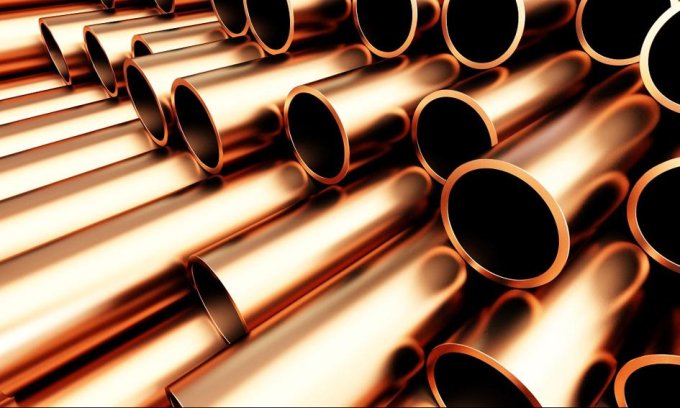
Practical tests: workshop methods
Magnet test
One of the simpler ways to distinguish copper from brass is to use the magnet test. Copper as well as brass are non-metallic magnetic materials, which means that a magnetic field will not affect them in any way. However, some special types of brass may contain minimal amounts of ferromagnetic elements, which may react mildly to a stronger neodymium magnet. In general, both substances do not exhibit magnetic properties, and their behavior in the presence of a magnet should be constant.
Sound test
When dealing with a metal that is difficult to identify, it is worth performing a sound test, which may prove helpful. This test involves striking a metal object and listening to the sound produced. Copper, as a pure chemical element, produces a deafening, heavy sound. Brass, on the other hand, is characterized by a more ringing, clear sound. This simple test can dispel doubts about the type of metal in many cases.
Some special analytical methods
Spectrometric analysis
Although physical and chemical tests are usually sufficient to distinguish copper from brass, in some cases more advanced methods of analysis, such as spectrometry, can be resorted to. Spectrometric analysis can accurately determine the chemical composition of a metal. In the laboratory, a metal sample is irradiated, and the light spectrum it emits is analyzed, making it possible to identify the individual elements present in the sample.
However, spectrometry is not available to the average user due to the cost and availability of equipment. It is a method used mainly in specialized laboratories.
XRF (X-ray fluorescence)
Another analytical method is XRF, or X-ray fluorescence. This technique involves exposing a sample to X-rays, which causes atoms in the sample to be excited and emit X-rays characteristic of the element. Analysis of these emissions allows precise determination of the chemical composition of the sample.
XRF is a very accurate method, but like spectrometry, it requires specialized equipment and is not available to amateurs.
Practical tips: how to use the knowledge gained
How to handle copper?
Copper is an extremely valuable material and valued in many industries. If you have been able to recognize that an item is made of copper, keep in mind some practical tips. Copper is soft and prone to scratching, so it should be handled with care. Because of its good thermal conductivity, it is ideal for kitchenware or plumbing.
Copper is also a controlled metal because of its value - be sure to recycle responsibly and reduce its waste.
How to deal with brass?
Brass, being a harder and more corrosion-resistant alloy, also has a wide range of industrial applications and is highly regarded. Knowing the properties of brass, it can be effectively used to manufacture various structural components that require strength and durability. Fittings, valves, musical instruments - these are just some of the many examples of brass applications.
Due to its resistance to corrosion, brass can be used in areas exposed to moisture and changing weather conditions, making it an ideal choice for such applications.
Expert opinions
Metallurgy expert on distinguishing copper from brass
Dr. Jan Kowalski, professor of metallurgy, explains: "Distinguishing copper from brass can be a challenge to the untrained eye, but using a few simple methods, such as analyzing color, weight, and chemical reactions, can quickly dispel any doubts. It's also worth noting that the use of more advanced techniques, such as spectrometry or XRF, makes it possible to unambiguously determine the chemical composition of a metal, which is particularly important in precision scientific and industrial applications."
Craftsman's opinion
Marek Nowak, an experienced craftsman, adds, "In my work I often encounter both copper and brass. The differences in hardness and color are quite pronounced, but it's always a good idea to conduct additional tests, especially if you intend to use the metal for a specific purpose. In my experience, the simplest and most reliable test in the workshop is the magnetic and sonic test - these methods are fast, effective and do not require specialized equipment."
Summary
Distinguishing copper from brass may seem difficult at first glance, but using the methods and techniques described makes the task much easier. It is worth noting physical characteristics such as color, weight and hardness, as well as performing simple chemical tests to dispel any doubts. For more advanced needs, you can turn to analytical methods, such as spectrometry or XRF, which will provide accurate results. Regardless of the method chosen, the ability to distinguish copper from brass is an extremely valuable piece of knowledge that can be applied in many areas of daily and professional life. Let's also keep in mind expert opinions that emphasize the importance of accuracy and precision in identifying these metals. Happy identifying!


